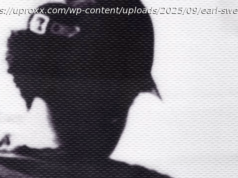‚Beyond Vision‘: Exhibit engages all the senses, inviting you to touch, smell and listen, too.
Cutting-edge technologies and designs can make daily life better, particularly for those with sensory disabilities, a new exhibit here demonstrates.
„The Senses: Design Beyond Vision“ features works that invite visitors to touch, hear and smell — often in combination (while looking good too). It’s on view at the Cooper Hewitt, Smithsonian Design Museum through Oct. 28.
Some of the pieces are already available to consumers, while others are prototypes offering glimpses of what may be to come. The designers hope „to stimulate our sensory responses to solve problems of access and enrich our interactions with the world,“ says museum director Caroline Baumann.
The family-friendly exhibit includes dozens of touchable works (custom-designed geranium and sandalwood hand sanitizer is provided throughout). And in keeping with the exhibit’s focus on accessibility „beyond vision,“ many of its labels are in braille and feature audio descriptions.
„This is very different from other shows because it’s about experience. There are a lot of experiences for people to try,“ says Andrea Lipps, assistant curator of contemporary design at the Cooper Hewitt, who organized the show with Ellen Lupton, senior curator of contemporary design. „Almost every work here engages multiple senses.“
The show opens with a large, curvaceous, furry wall embedded with sensors that play music when it’s touched. „Tactile Orchestra,“ created by Studio Roos Meerman and KunstLAB Arnhem, is designed so that one touch prompts a recording of a string instrument playing, and multiple touches result in the playing of the entire musical composition.
„Everyone who sees the wall wants to pet it, and the more people who stroke the wall, the more instruments join in,“ Lipps says. „It’s tactile and audio and visual.“
Across the room, „Dialect for a New Era“ features six translucent pillars, each with a line of text describing an emotional state. Visitors can push a button on each pillar, releasing a scent meant to forge connections between language and smell. The piece is a collaborative work by Frederik Duerinck and Marcel Van Brakel, Polymorf and IFF, along with linguist Asifa Majid and perfumer Laurent Le Guernec.
Other attractions include a commissioned work by Man Made Music called Alarm Fatigue. Its design aims to improve the sonic environment of hospitals, where the frequent beeping and pinging of medical equipment can be problematic for patients and caregivers alike.
There’s a 3-D map of the Smithsonian Museum in Washington, D. C., that talks when touched (by Touch Graphics), and a Dot Watch, a braille smartwatch.
Vibeat wearable speakers are designed to convert sound into vibrations that can be felt on the skin. Elsewhere, digital animation translates bird chirps into bursts of color and motion.
Another section of the exhibit features 3-D printed vessels made from curry or coffee grounds that smell, well, like curry or coffee (by architects Ronald Rael and Virginia San Fratello).
A work called „Seated Catalog of Feelings,“ by Sosolimited, sends patterns of vibrations through the seat and back of a chair to evoke odd sensations like „falling backward into a tub of Jell-O“ or „getting stroked by an electric toothbrush.“ Snow Storm, a commissioned work by Christopher Brosius, features balls of felted wool suspended from above, each infused with a scent meant to evoke winter.
„It’s fun, but it’s also about smell in our living spaces. Wool holds smell much more than skin,“ Lipps explains. „So spraying perfume on a sweater will make the smell last longer than if you spray it on your skin.“
And for those struggling with loss of appetite, Ode is a „personal scent player“ that diffuses food smells into a room at mealtime.
„When we munch on a crunchy pretzel and or swallow a creamy blob of ice cream, we indulge in the multisensory allure of eating. Although serving food is off-limits in a museum, the exhibition shows how package designers use color and texture to prime our appetite,“ says Lupton.
Jinhyun Jeon’s Sensory Spoons, which are edged with bumps or rippled like waves to stimulate the mouth, highlights the relationship between taste and touch, Lupton says.
Elsewhere, jazzy, colorful buttons, handles and grab bars — as illustrated by Dementia Care Bathroom Fixtures by HEWI — promote safety by helping those features stand out better. As with many of the works in the show, they combine style and function and are intended to appeal to both those with and without sensory disabilities.
The show is accompanied by a book, „The Senses: Design Beyond Vision,“ by David Genco, co-published by the Cooper Hewitt museum and Princeton Architectural Press.
„Design is extending the realm of the senses,“ Baumann writes in her foreword to the book. „Experimenting with new and familiar materials, customizing products, and embracing the different needs and experiences of users, contemporary designers are . capitalizing on our extraordinary powers of perception to enrich and improve daily life.“






